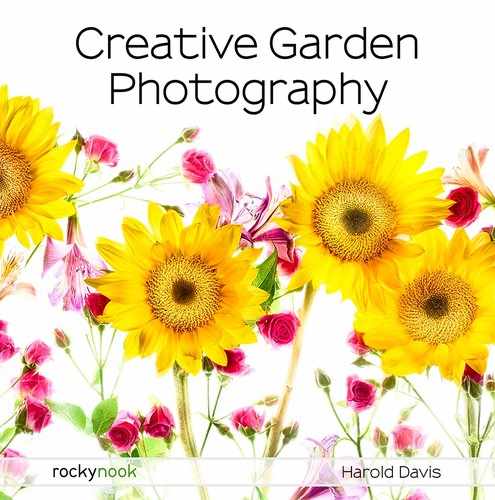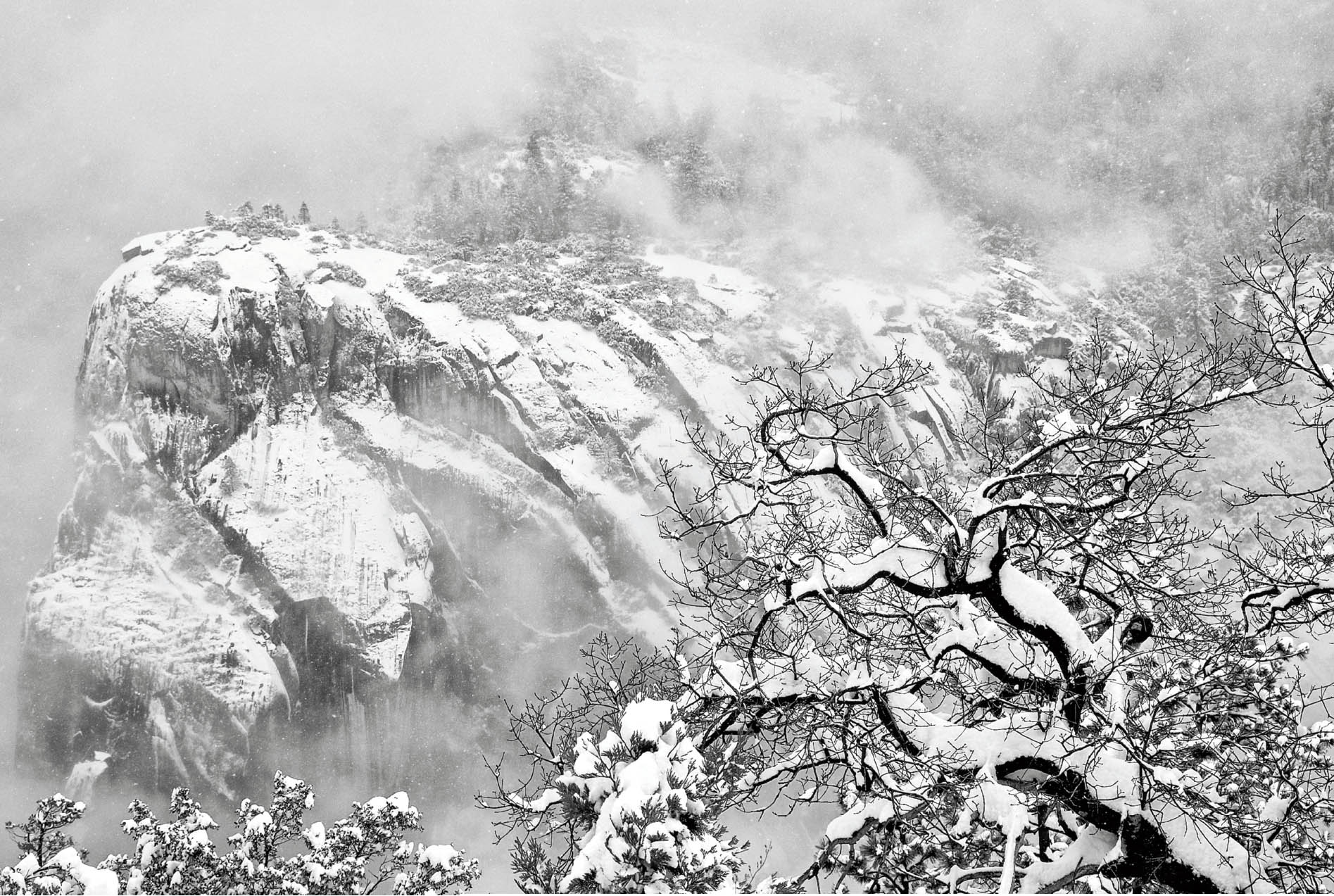The Importance of Garden Design
Do gardens have to be designed? Or to put this question another way, do gardens have to be designed by human garden designers?
This is a surprisingly controversial question. Clearly, according to the Bible, the Garden of Eden was designed independently of man and woman, although arguably for their benefit. Less dogmatically, there’s a clear case to be made that the best gardens are actually not intentionally designed. I completely subscribe to this viewpoint. Some of the places that I view as the most beautiful gardens that I have ever seen are in the wilderness, and untouched by human hands.
Yosemite Snowstorm—I drove down into Yosemite Valley from Crane Flat in a full white-out blizzard, tire chains required, windshield wipers freezing, and huge wet flakes of snow turning visibility to nothing.
As I was rounding the bend and beginning the descent into the valley floor, the storm began to lift. I parked and raised my camera to make some images, with the gnarled shapes of the trees in the snow echoing the rock formation in the background.
Nikon D70, 52mm, 1/400 of a second at f/11 and ISO 200, hand held.
Flowers at Giverny—In the late afternoon light, the aisles of flower beds under arbors planted in the garden at Giverny looked almost like an Impressionist painting. I put my camera on the tripod, and lowered my ISO to make as long an exposure as possible to amplify this impressionistic effect, by adding a very slight amount of motion blur to the flowers in the foreground.
Nikon D850, 122mm, 2 seconds at f/29 and ISO 31, tripod mounted.
I do understand, although I disagree, that many garden devotees feel that intentional design is a prerequisite for a place being a garden. Somewhat oddly, in Japanese gardening, there is usually very much an intentional garden design. However, the point of wabi-sabi in Japanese garden design is largely to mimic the sense of nature performing and time passing on its own without human intervention. The beauty in decay is that these things are created supposedly without human intervention.
In any case, most of the gardens that you are likely to photograph have been impacted by intentional design. In a significant way, this echoes photography itself. Photography can well be thought of as applied two-dimensional design: One is creating a visual statement within the constraints and constructs of a horizontal and vertical axis. There are any number of theories—the rule of thirds, entry and exit points from an image, etc.—that purport to provide a recipe for rendering the real world in the two-dimensional design that is a photograph.
Similarly, a garden is an act of design, albeit three-dimensional and involving living flora (pace to the Zen rock garden). An important aspect of intentional garden design is to take into account the progression of the garden over seasons and time. So essentially, as a photographer who is design conscious, one is rendering a three-dimensional design project and hopefully creating a two-dimensional version.
Can the photograph ever exactly replicate the design intentions of the garden? Maybe not. But here we enter a gray and murky area. One of the key issues is what the photographer means to do. Hypothetically, if one is hired by a garden designer with the mandate to create a portfolio photograph, then the photo ought to largely echo the intentions of the designer. This might be somewhat different if the photographer is hired by the wealthy patron who commissioned the garden design. In this case, the point of the photo might be to make the garden look sumptuous, and convey a sense of the status of the garden’s patron (see pages 44–47).
For my own part, it is certainly my preference to add my reaction to a garden to the intentions, as I read them, of the garden’s designer. For example, visiting Monet’s garden at Giverny has given me a feeling of intense exaltation. My goal in creating photographs of Giverny is to convey this sense to the viewer.
The long and short of it is that the intent of the designer always matters, no matter who he or she is, and no matter how the garden has grown up since the original plantings. Most garden designers—from the designer of the smallest backyard garden to the royal planner for the largest, most sumptuous palace grounds—creates a garden following a plan, and with something very clear in mind. It’s good to have an understanding of the design idea, but what you do with it is up to you. This will depend on your goals in creating the photograph and what you want to do with the photograph.
Wisteria Gate—On a busy street near where I live in Berkeley, California, I noticed this blue house and gate, leading to a front yard garden. As the cars whizzed by behind me, I stood on the sidewalk looking at the house and was struck by the attractive ironwork on the garden gate. But the overall effect was a little stark.
As spring commenced, it became clear that a wisteria vine had been planted to give a splash of purple color and soften an otherwise straightforward exterior.
iPhone 6s, processed in Waterlogue and Image Blender.



